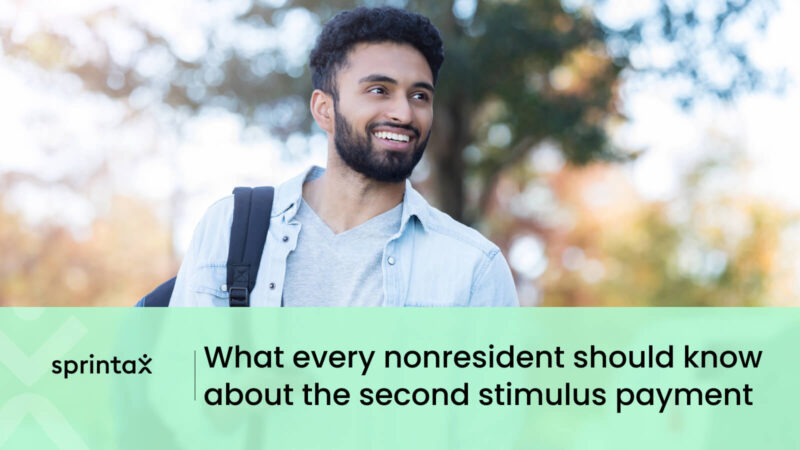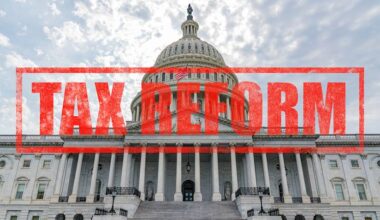Did you receive $600 from the IRS? Here’s what you should know
In late December, the US government passed an act which authorized the IRS to begin delivering a new round of pandemic Economic Impact Payments to taxpayers – via direct debit and paper checks.
The Coronavirus Response and Relief Supplemental Appropriations Act provides a one-time payment of up to $600 per eligible person.
This is the second pandemic stimulus payment released by the US government and follows the $1,200 CARES Act payments that were issued in April.
However, if you receive the $600 payment from the IRS, it is important to be aware that you are not necessarily entitled to it.
Thousands of ineligible taxpayers (including many nonresident aliens) received the CARES Act payments in spring 2020 and it is anticipated that there will be many more ineligible recipients of the second payment.
The onus will be on those that are sent the payment in error to return it to the IRS and amend their tax documents, if necessary.
In this guide, we are going to take a closer look at the second stimulus payment, what it is, who can claim it and what you should do if you receive a check when you are not entitled to it.
Quick Refresher: What was the CARES Act?
In April, as a direct response to the COVID-19 pandemic, the US government introduced a first stimulus payment – the CARES (Coronavirus Aid, Relief and Economic Security) Act.
The act provided a one-time stimulus payment of $1,200 that was paid to workers who were earning less than $75,000 per year.
You were not entitled to receive the CARES Act payment if you were:
- A nonresident alien
- A single taxpayer with an adjusted gross income (AGI) above $99,000
- A head of a household with an AGI over $136,500
- A married couple with an AGI over $198,000
- A child over 16 or a college student under age 24
Who is entitled to receive the second stimulus payment?
Similarly to April’s CARES Act, you will be entitled to receive the full stimulus payment if you:
- are a US citizen or resident
- have a gross income of up to $75,000 ($150,000 for married couples)
- can not be claimed as a dependent by another taxpayer
- have a valid Social Security Number (SSN) – this was also a required for the CARES Act payment.
How much is the second stimulus payment worth?
Every eligible taxpayer that earns $75,000 a year (or less) is eligible to receive $600. A married couple earning less than $150,000 is entitled to $1,200.
However, if your income is above these thresholds, the stimulus check will be proportionally lower (5% or $5 for every $100 of additional income). This means that the benefits will phase out entirely for single people earning over $87,000 (or married couples earning more than $174,000).
There is additional money too for each child in your family. A married couple or a single parent can obtain an extra $600 for every child dependent under 17 and there is no cap on the number of child dependents that a household can claim.
Many social security recipients are also entitled to receive $600 checks automatically.
I am entitled to this payment. What do I need to do to claim it?
Nothing! These payments are issued automatically. As with the first round of payments under the CARES Act, most recipients will receive these payments by direct debit. There is no need to contact your financial institution or the IRS to request the payment.
Anyone who received the first round of payments earlier this year but does not receive a payment via bank transfer will generally receive a check.
Who is NOT entitled to the $600 payment?
Nonresident aliens (for tax purposes)
In order to be eligible for this payment you must be a US citizens, permanent resident or resident for tax purposes (and have a valid SSN).
In other words, nonresident aliens (from a tax perspective), temporary workers and immigrants who are in the US illegally are not eligible to claim the second stimulus payment.
Some immigrants may qualify for a stimulus check, if they meet the eligibility criteria and have a valid SSN. For example, immigrants with green cards or H-1B and H-2A work visas can be eligible for a check.
What’s more, mixed-status households, or those where a family member does not have SSN but others do, will be eligible for stimulus payments. This is a key change from the CARES Act.
High-wage earners
If your income is too high, you will not get a check. As mentioned above, if you are earning more than $87,000 as a single individual (or $174,000 for a couple) you will be ineligible to receive the payment.
Students
Students age 17 or older will not qualify for a stimulus check if their parents or guardians claim them as dependents.
Their parents also won’t get the payment as it applies only to children 16 and younger.
How can I determine if I am a nonresident alien?
In short, you are a resident alien for tax purposes (and potentially entitled to the $600 payment) if you pass either the Green Card or Substantial Presence Tests.
If you cannot pass either of these tests, you will be considered a nonresident alien.
Find out more about how to determine your US tax residency status here.
I am a nonresident in the US. What should I do if I receive the second stimulus payment?
If you receive the second stimulus payment (or you have already received the CARES Act payment), it is likely because you filed your tax return as a resident for the 2019 tax year.
The first thing to do is to double check that you were entitled to file as a resident.
You could do this for FREE by completing the substantial presence test on Sprintax.
Create an account to get started
If you correctly filed as a resident, you are entitled to keep the payment.
However, thousands of nonresidents file their tax returns incorrectly every year.
If you incorrectly filed as a resident and you are not entitled to the money, you should return the payment to the IRS.
Here’s how to do it:
If you receive the payment as a paper check (and have not cashed it):
- Write “Void” in the endorsement section on the back of the check.
- Mail the voided Treasury check immediately to the appropriate IRS location listed below.
- Don’t staple, bend, or paper clip the check.
- Include a note stating the reason for returning the check.
If you received the payment as a paper check and cashed it, or if you received the payment as a direct deposit:
- Submit a personal check, money order, etc., immediately to the appropriate IRS location listed. Find more details on where to return the payment here.
- Write on the check/money order made payable to ‘U.S. Treasury’ and write ‘Second EIP 2021’, and your taxpayer identification number (social security number, or individual taxpayer identification number).
- Include a brief explanation of the reason for returning the payment.
You must also file an amended tax return for any tax years which you incorrectly filed as a resident.

How to amend your tax return
If you discover that you made an error on your tax documents, you will need to amend your tax return and file form 1040X.
You can easily amend your tax return and fill out 1040x online using Sprintax.
Learn more about how to amend your US tax return here.
I have already amended my tax return and I still received the second payment. What should I do?
It is likely that you received the second stimulus payment because the IRS have not yet processed your amended return.
There is no need to file another amended return.
However, you should still return the $600 payment to the IRS using the methods listed above.
What happens if I keep the payment when I am not entitled to it?
If you receive the stimulus payment in error, you should return it to the IRS.
By keeping the payment, you may incur penalty or interest payments or jeopardize your future US visa or Green Card applications.
I correctly filed as a resident in 2019. However, I am now back in my home country. I have received the second stimulus payment. What should I do?
If you were a resident in 2019, but are considered a nonresident for 2020 – it is likely that you will not be entitled to the second payment.
In order words, if you are no longer living in the US, you should return the payment to the IRS.
Who can help me with my US taxes?
Sprintax can help you with every element of your US nonresident taxes.
2020 tax filing
If you have not yet filed your 2020 tax return, you should do so right away. You can easily e-file your federal return and prepare your state return tax documents online with Sprintax.
Get started with your nonresident alien tax return here
Tax return amendments
Made a mistake on your previous tax return? No problem! Sprintax takes the stress out of tax return amendments.
24/7 Live Chat support
Got questions about US tax?









